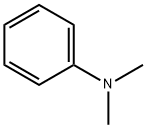Antazoline
- CAS NO.:91-75-8
- Empirical Formula: C17H19N3
- Molecular Weight: 265.35
- MDL number: MFCD00047013
- EINECS: 202-094-0
- SAFETY DATA SHEET (SDS)
- Update Date: 2024-11-19 20:33:22

What is Antazoline?
Chemical properties
White, odorless crystalline powder with bitter taste. Sparingly soluble in alcohol and water; practically insoluble in benzene and ether.
Originator
Antistine HCl,Ciba,US,1948
The Uses of Antazoline
Antihistaminic.
Background
Antazoline is a 1st generation antihistamine with anticholinergic activity. It is used to relieve nasal congestion. It is also formulated as eye drops with naphazoline to relieve allergic conjunctivitis.
Indications
Used to relieve nasal congestion and in eye drops, usually in combination with naphazoline, to relieve the symptoms of allergic conjunctivitis.
Definition
ChEBI: A member of the class of imidazolines that is 2-aminomethyl-2-imidazoline in which the exocyclic amino hydrogens are replaced by benzyl and phenyl groups. Antazoline is only found in individuals that have taken the drug.
Manufacturing Process
15.4 parts of 2-chloromethylimidazoline hydrochloride, 45.8 parts of Nbenzylaniline and 150 parts of alcohol are heated in an oil bath at 100° to 110°C. After distilling off the alcohol, the reaction mass is maintained at this temperature for a further 3 hours and then triturated with water and 10 parts of sodium bicarbonate. The unconsumed benzylaniline is extracted with ether and the aqueous solution neutralized with dilute hydrochloric acid. By evaporating this solution and extracting the residue with alcohol there is obtained 2-(N-phenyl-N-benzylaminomethyl)imidazoline hydrochloride in the form of colorless crystals of melting point 227° to 229°C.
Therapeutic Function
Antihistaminic
Pharmacokinetics
Antazoline is a histamine H1 receptor antagonist. It selectively bind to but does not activate histamine H1 receptors, thereby blocking the actions of endogenous histamine.
Clinical Use
Antazoline is used for local application to the eye in allergic conjunctivitis.
Safety Profile
Poison by ingestion, subcutaneous, and intraperitoneal routes. An eye irritant. When heated to decomposition it emits toxic fumes of NOx.
Metabolism
Not Available
Properties of Antazoline
| Melting point: | 120-122° |
| Boiling point: | 398.57°C (rough estimate) |
| Density | 0.9786 (rough estimate) |
| refractive index | 1.6080 (estimate) |
| pka | pKa 6.65(H2O
t = 25
I = 0.05) (Uncertain) |
| form | A solid |
| color | White to off-white |
| Water Solubility | 663.4mg/L(30 ºC) |
| CAS DataBase Reference | 91-75-8(CAS DataBase Reference) |
| NIST Chemistry Reference | Antazoline(91-75-8) |
Safety information for Antazoline
Computed Descriptors for Antazoline
Antazoline manufacturer
New Products
(S)-3-Aminobutanenitrile hydrochloride 4-Methylphenylacetic acid N-Boc-D-alaninol N-BOC-D/L-ALANINOL Tert-butyl bis(2-chloroethyl)carbamate 3-Morpholino-1-(4-nitrophenyl)-5,6-dihydropyridin- 2(1H)-one Furan-2,5-Dicarboxylic Acid Tropic acid 1-Bromo-3,5-Di-Tert-Butylbenzene S-2-CHLORO PROPIONIC ACID ETHYL ISOCYANOACETATE 2-Bromo-1,3-Bis(Dimethylamino)Trimethinium Hexafluorophosphate 4-IODO BENZOIC ACID 3-NITRO-2-METHYL ANILINE 1-(2,4-DICHLOROPHENYL) ETHANAMINE (2-Hydroxyphenyl)acetonitrile 4-Bromopyrazole 2-(Cyanocyclohexyl)acetic acid 4-methoxy-3,5-dinitropyridine 1-(4-(aminomethyl)benzyl)urea hydrochloride 2-aminopropyl benzoate hydrochloride diethyl 2-(2-((tertbutoxycarbonyl)amino) ethyl)malonate tert-butyl 4- (ureidomethyl)benzylcarbamate Ethyl-2-chloro((4-methoxyphenyl)hydrazono)acetateRelated products of tetrahydrofuran








You may like
-
 Antazoline 98%View Details
Antazoline 98%View Details -
 Antazoline 98%View Details
Antazoline 98%View Details -
 1975-50-4 98%View Details
1975-50-4 98%View Details
1975-50-4 -
 2-HYDROXY BENZYL ALCOHOL 98%View Details
2-HYDROXY BENZYL ALCOHOL 98%View Details
90-01-7 -
 2-Chloro-1,3-Bis(Dimethylamino)Trimethinium Hexafluorophosphate 221615-75-4 98%View Details
2-Chloro-1,3-Bis(Dimethylamino)Trimethinium Hexafluorophosphate 221615-75-4 98%View Details
221615-75-4 -
 61397-56-6 CIS BROMO BENZOATE 98%View Details
61397-56-6 CIS BROMO BENZOATE 98%View Details
61397-56-6 -
 14714-50-2 (2-Hydroxyphenyl)acetonitrile 98+View Details
14714-50-2 (2-Hydroxyphenyl)acetonitrile 98+View Details
14714-50-2 -
 118753-70-1 98+View Details
118753-70-1 98+View Details
118753-70-1